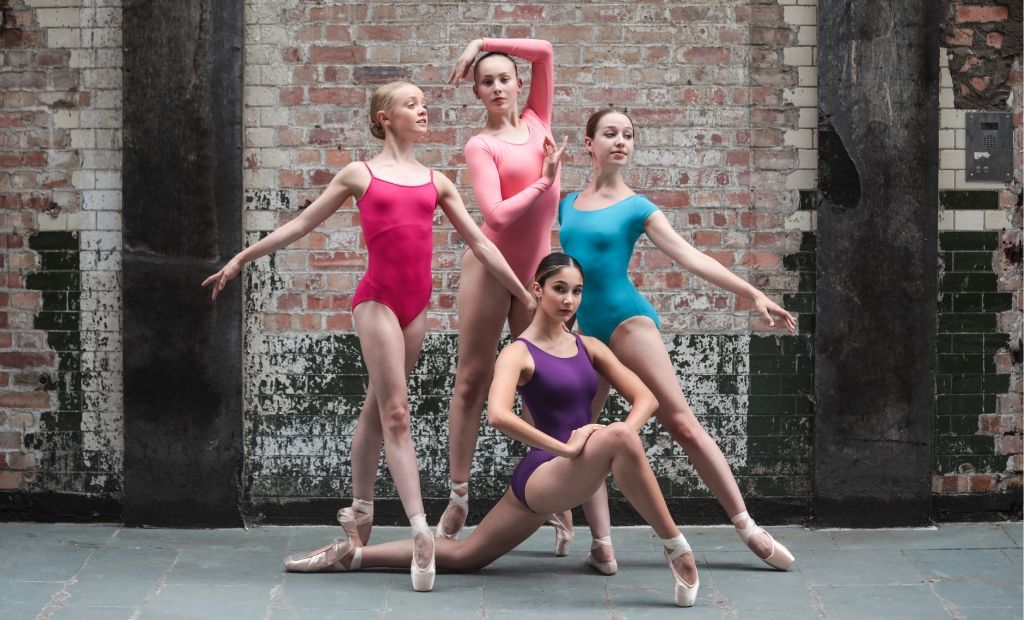
The history of the dance leotard
The history of the dance leotard
While leotards are perhaps synonymous with dance in many people's mind, the two have not always been so tightly connected. From the definition of the leotard to its history, here we chart this rise and rise of this famous dance staple.
What is a leotard?
The leotard we know and love today, is of course a one-piece garment which covers the upper body while leaving the legs free. As such, it is the ideal garment for dance, likely to be one of the very first items of dancewear a young dancer will ever own.
Who Invented the leotard?
Strange but true - leotards are named after a person! The leotard (or maillot as it was first known) was actually named after a 19th century French acrobat named Jules Léotard, who was renowned for pushing the boundaries of trapeze performance. In his quest to make his act more dramatic, he designed a tight-fitting, one-piece garment intended to show off his physique while giving him unrestricted movement, and so the original style of leotard was born. However, Léotard's maillot design only came to be called a leotard many years after his death in 1870.

Leotards in history: A design for men
Monsieur Léotard's maillot design was initially only intended to be worn by men. As Léotard performed his trapeze act in a circus, his maillot soon became popular among other types of male circus performers too, such as “strong men”.
Nowadays leotards have a universal appeal and are worn for many sports and exercise regimes, amended and tailored to meet the needs of the specific activity for which they are required. Consequently, this basic garment is now worn for ice skating, gymnastics, acting and performance, athletics, cycling and of course dance.
Leotards are still worn by circus performers and acrobats today, and even the modern design of a women's one-piece swimming costume can be mapped back to the leotard.
The evolution of the leotard
Since the maillot first appeared, the designs and use of leotards has changed and evolved substantially. In the 1950s, leotards were mostly worn by stage artistes and circus entertainers, but moving towards the 1970s, plain coloured leotards became popular as exercise wear in schools and fitness centres.
In the 1970s, brightly coloured leotards became the style to be seen in. Most leotards were crafted from polyester, however in the 1980s, technological advancement in textile fabrication saw the introduction of Spandex and Lycra —two materials which boast exceptional elastic qualities.
Nowadays, all sorts of materials may be used in the manufacturing of leotards, including cotton, velvet, velour and metallic fabrics. It's also common for them to feature ornate designs and embellishments, especially in the case of gymnastics.

The different styles of leotard
Leotard styles have also evolved over the years, resulting in the configurations of unitards and singlets. The different leotard styles, and their definitions, are:
Unitards
Unitards — which are also known as body stockings — are a type of leotard which covers not just the upper body, but the legs as well, and so can be thought of as a leotard with inbuilt tights. Unitards are frequently used by dancers, acrobats, gymnasts, athletes and stage performers.
Singlets
Leotards with shorts are called singlets. Singlets are also one-piece garments, but unlike leotards that are cut high above the legs, singlets cover the top part of the legs rather like tight-fitting shorts. Singlets are mostly used in wrestling. Biketards are very similar to singlets in that they are tightly fitted, with inbuilt shorts to cover up to the mid-thigh area. They may be worn by cyclists, wrestlers and rowers, but are also commonly used by dancers and gymnasts too
Leotard styles have also evolved over the years, resulting in the configurations of unitards and singlets. Unitards — which are also known as body stockings — are a type of leotard which covers not just the upper body, but the legs as well, and so can be thought of as a leotard with inbuilt tights. Unitards are frequently used by dancers, acrobats, gymnasts, athletes and stage performers.
Singlets are also one-piece garments, but unlike leotards that are cut high above the legs, singlets cover the top part of the legs rather like tight-fitting shorts. Singlets are mostly used in wrestling. Biketards are very similar to singlets in that they are tightly fitted, with inbuilt shorts to cover up to the mid-thigh area. They may be worn by cyclists, wrestlers and rowers, but are also commonly used by dancers and gymnasts too.
Looking back at fashion from the 1970s and 1980s, it's clear that there was a huge shift in trends. An explosion in the popularity of leotards in the 1970s was fuelled by the arrival of disco and the global obsession with aerobic workouts. These designs were promoted by such celebrities as Jane Fonda – who famously put her name to a series of energetic workout videos – and as such, the leotard practically epitomises 1970s fashion.
The differences between men's and women's leotards
Men's leotards commonly differ from popular women's styles in several different ways. Firstly, they usually have either lower cut fronts and legs, like the full-seated bottom style, or very high cut fronts and legs, like a thong design. The men's thong leotard is most commonly favoured for ballet and worn with ballet tights over the top, so that no line is visible underneath.
Another major difference between male and female leotards, is that women's styles can often feature sparkles, extra materials, decorations, prints, and colours that are far more feminine and ornate, whereas men's designs tend to be much simpler, usually in a muted colour palette with no decoration.
Inspired to invest in a luxe new leotard for class or performance? Shop our full range now!
